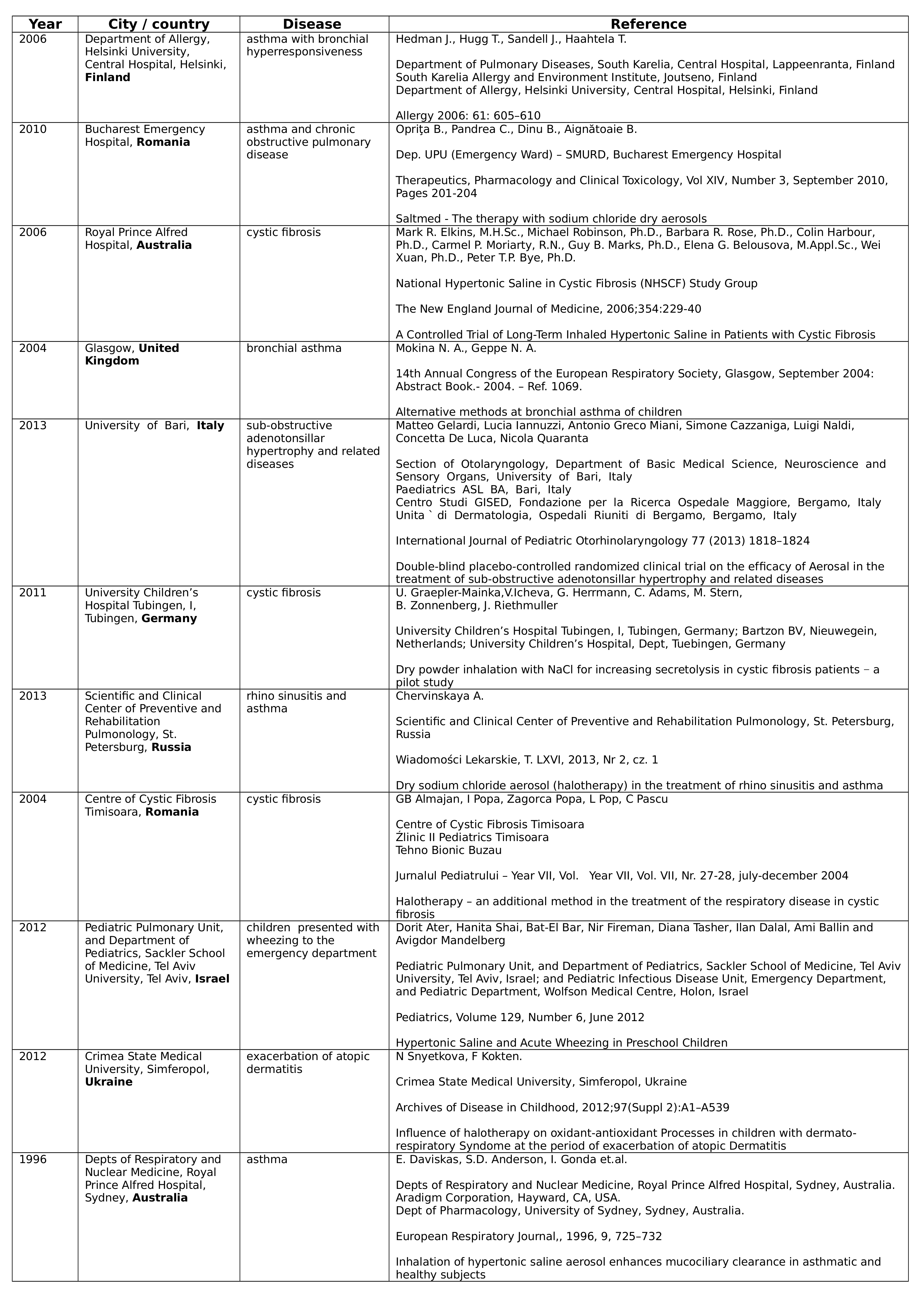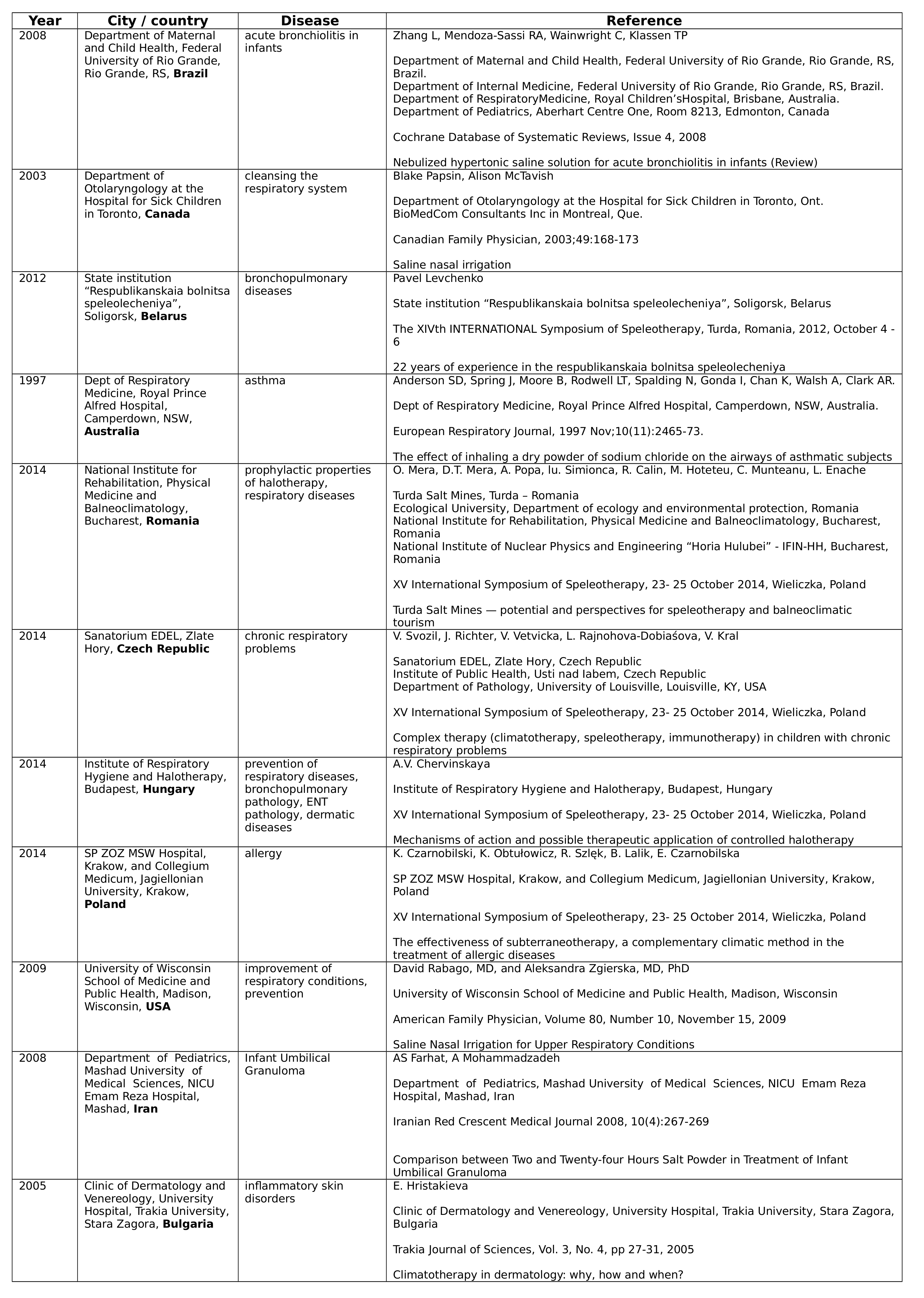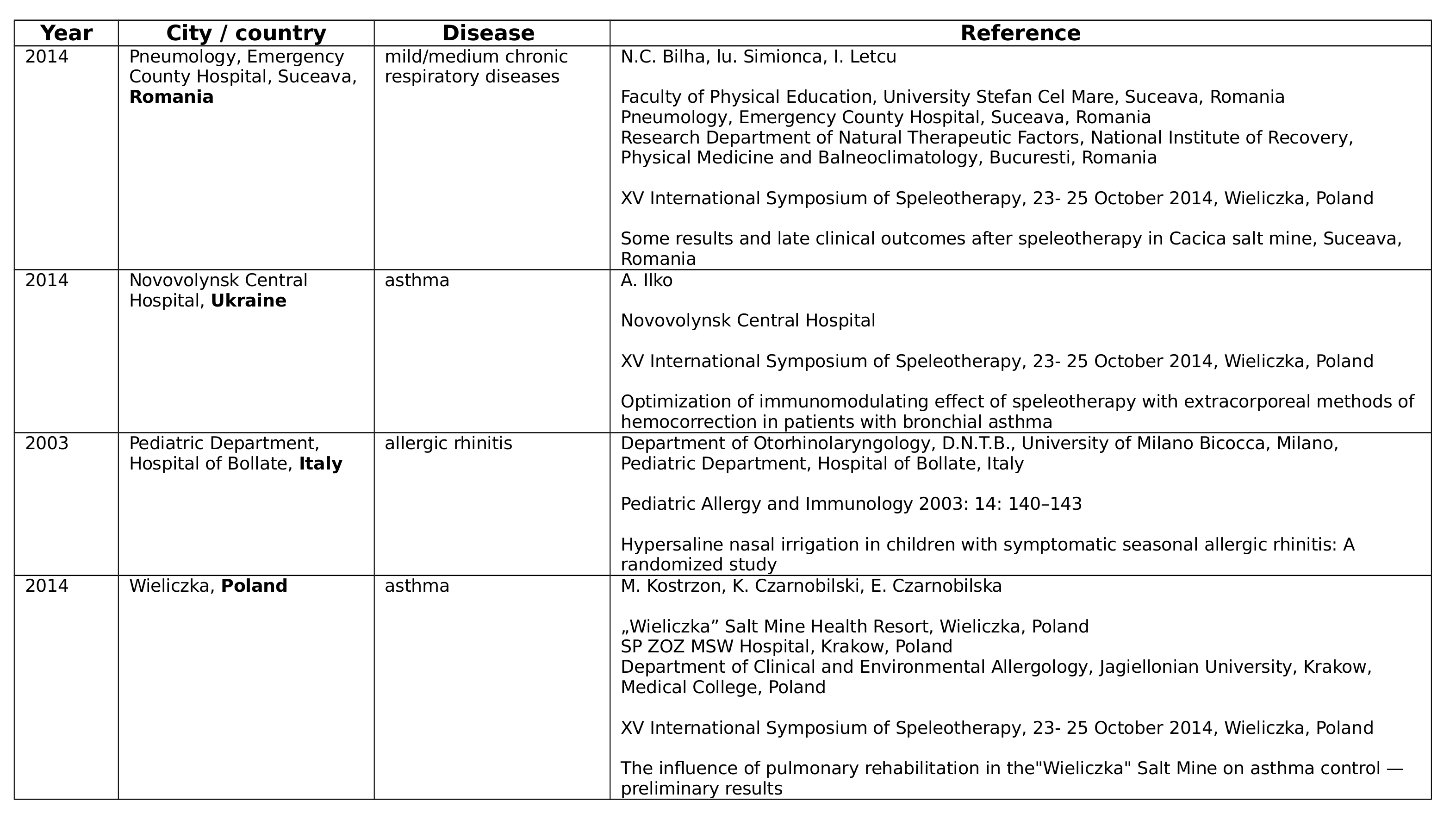Selected clinical trials of halotherapy



Halotherapy in any form acts directly on the site of the disease, omitting the liver and cellular barrier.
The secret to the effectiveness of halotherapy lies in simplicity.
Salt by launching the phagocytosis process supports tissue nutrition and responses to inflammatory foci. This results in the elimination of the inflammatory process and stimulation of the pro-ductional processes.
Flushing at the same time cleanses the respiratory system from the retained mucus. It improves the respiratory efficiency, and thus the efficiency of the whole organism. Salt has no cheaper alternatives.
The healing factor in halotherapy is the natural sodium chloride in our body. This fact makes that everyone can use halotherapy without exception. Numerous clinical trials of halotherapy on groups of patients at various stages of disease conducted in many medical centers, hospitals in the world confirmed high effectiveness. In many cases it was possible to discontinue medication. Patients after the end of treatment enjoyed a long time without symptoms of the disease.
The effectiveness of salt aerosol inhalation was confirmed for the first time in Poland, in Wieliczka salt mine. Feliks Boczkowski was the first to recommend walking in the mine, where the patients breathed salt aerosol.
Halotherapy in the form of inhalation is effective in relation to all the most prevalent diseases of the respiratory organs. In chronic diseases, asymptomatic, it avoids acute relapses. In acute conditions, however, it accelerates recovery.
Efficacy in relation to allergy or asthma exceeds 80%, in sinus diseases an improvement was observed in 100% of subjects.
Halotherapy really improves the health of the society, thanks to its high effectiveness in relation to the currently most troublesome diseases. Nearly every 2 Poles have allergy problems, the percentage of asthmatics with unrecognized disease is estimated at 67%, while among children suffering from asthma 78% do not know about their illness. Asthma is the most common chronic disease of children and people up to 30 years of age.
